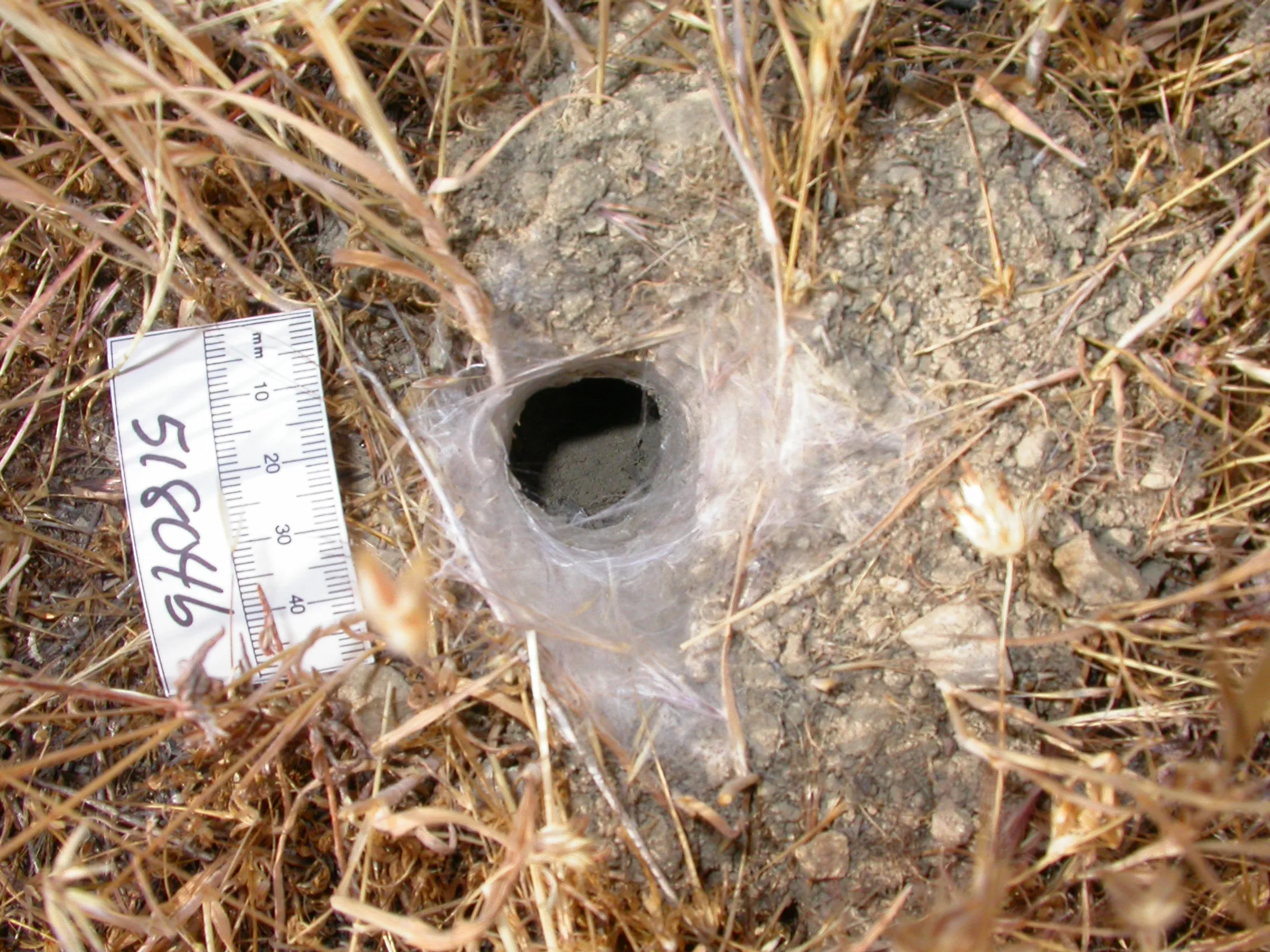What are Burrowing Tarantulas
Burrowing tarantulas are fascinating creatures, belonging to the Theraphosidae family, known for their unique lifestyle of creating and inhabiting underground burrows. Unlike their arboreal or terrestrial counterparts, these tarantulas spend a significant portion of their lives concealed, providing them with safety and a stable environment. This behavior is an essential part of their survival strategy, offering protection from predators and extreme weather conditions. Observing burrowing tarantulas can be a rewarding experience, as it provides insight into their natural behaviors and adaptation to their environment. Their burrowing habits also influence their needs in captivity, as they require specific substrate and enclosure setups to thrive.
Key Characteristics of Burrowing Tarantulas
Burrowing tarantulas showcase several distinguishing characteristics that set them apart. Their physical adaptations, such as strong legs and powerful chelicerae, are crucial for digging and maintaining their burrows. These adaptations enable them to excavate and reinforce their underground homes effectively. Behaviorally, they are often more reclusive and spend the majority of their time within their burrows. Their diet typically consists of insects and occasionally small vertebrates, which they ambush from their underground dwellings. Their burrowing lifestyle plays a vital role in thermoregulation and humidity control, creating a microclimate that helps them survive and thrive.
How to Identify Burrowing Behavior
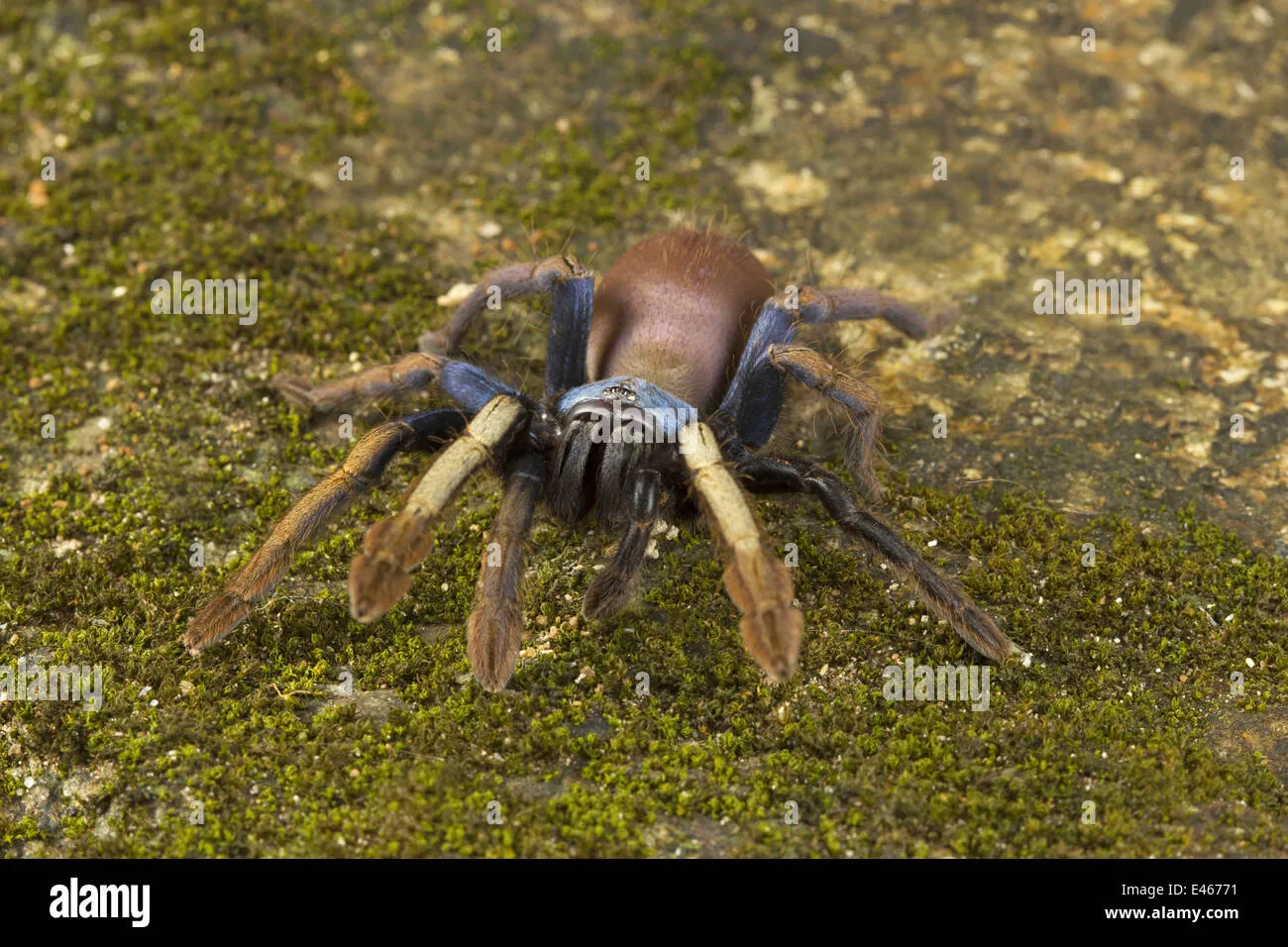
Identifying burrowing behavior in tarantulas can be achieved through careful observation of their habitat and habits. Look for signs of burrow construction, such as excavated substrate piles and tunnels. The presence of a silken web lining the burrow entrance is another indicator. These webs help stabilize the burrow and detect the movement of prey. Reclusive behavior is also a telltale sign; burrowing tarantulas tend to retreat into their burrows when disturbed. You can often spot them at the entrance, waiting for prey or peeking out to survey their surroundings. Analyzing these clues will help you determine whether a tarantula species is a burrower.
Top 7 Burrowing Tarantula Species
1. Acanthoscurria geniculata (Giant White Knee)
The Giant White Knee, native to Brazil, is a popular choice among tarantula enthusiasts. They are known for their impressive size and distinct white bands on their knees. These tarantulas are relatively fast-growing and can reach a leg span of up to 8 inches. Their temperament is often described as defensive, but they are generally not aggressive. They are excellent burrowers and require a deep substrate to construct their homes. The Giant White Knee’s striking appearance and manageable care make it a favored pet for those seeking a larger, robust tarantula.
Habitat and Care

Provide a spacious enclosure with at least 6 inches of substrate. Maintain a humidity level of 60-70% and a temperature range of 75-85°F. Feed them a varied diet of insects, such as crickets and roaches, and provide a shallow water dish.
2. Grammostola pulchra (Brazilian Black)
The Brazilian Black tarantula is another sought-after species due to its stunning, all-black coloration. Native to Southern Brazil and Uruguay, they are known for their docile temperament, making them suitable for beginners. They are relatively slow-growing and reach a maximum leg span of approximately 6-7 inches. Their calm demeanor and beautiful appearance contribute to their popularity in the pet trade. They are burrowers and enjoy a secure, well-established burrow system within their enclosure.
Temperament and Appearance
Known for their gentle temperament and striking all-black appearance. Provide a deep substrate of at least 6 inches. Maintain humidity between 60-70% and a temperature of 75-85°F. Feed them a diet of insects. Their docile nature makes them a popular pet.
3. Lasiodora parahybana (Brazilian Salmon Pink)

The Brazilian Salmon Pink tarantula, one of the largest tarantula species, is a favorite among experienced keepers. Native to Brazil, they can reach an impressive leg span of up to 10 inches. They are known for their robust size, fast growth rate, and salmon-pink hairs. Their temperament can vary; they are generally docile but can display defensive behaviors if threatened. Due to their size, they require a spacious enclosure with a deep substrate for burrowing. Providing proper care is important to ensuring their well-being.
Size and Growth Rate
These tarantulas can grow very large, up to 10 inches. Provide a large enclosure with deep substrate. Keep humidity at 65-75% and a temperature of 75-85°F. They grow quickly and should be fed regularly. Provide a large water dish.
4. Aphonopelma chalcodes (Desert Blonde)
The Desert Blonde tarantula is a North American species native to the southwestern United States. They are known for their tan to golden coloration. Their leg span can reach up to 6 inches. These tarantulas are known for their docile nature. Desert Blondes are adapted to arid environments, and as burrowers, they need a substrate that allows them to create burrows. They are a great choice for beginners. Their adaptability to dry conditions and their calm demeanor make them popular.
Geographical Distribution
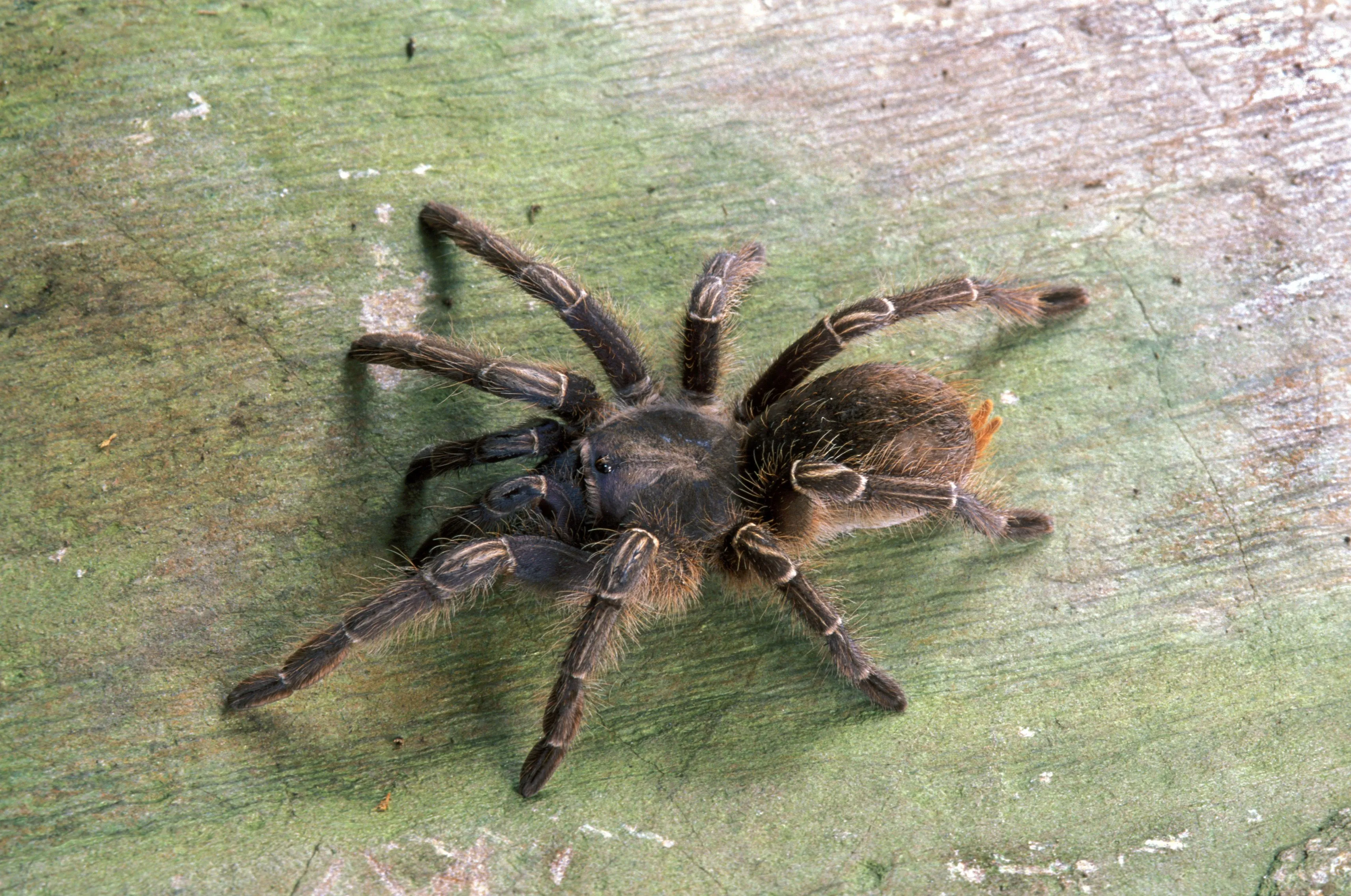
Found in the southwestern United States. They need a dry, arid environment. Keep humidity low, around 50-60%, and temperature 70-80°F. Provide a dry substrate. They are well-adapted to these conditions and do well in captivity.
5. Brachypelma hamorii (Mexican Red Knee)
The Mexican Red Knee tarantula is iconic, recognized by its striking black and red coloration. Native to the Pacific coast of Mexico, this species is well-loved in the tarantula community for its docile temperament. Their leg span can reach up to 6 inches. These tarantulas are burrowers, especially when young, and require a suitable substrate to facilitate this behavior. Their ease of care and beautiful appearance make them very popular. Provide a secure environment for them to thrive.
Lifespan and Behavior
They can live for many years, particularly the females. Provide a deep substrate for burrowing. Maintain humidity at 60-70% and temperature between 75-85°F. Feed them insects, varying their diet. They are generally docile.
6. Tliltocatl albopilosus (Curly Hair Tarantula)
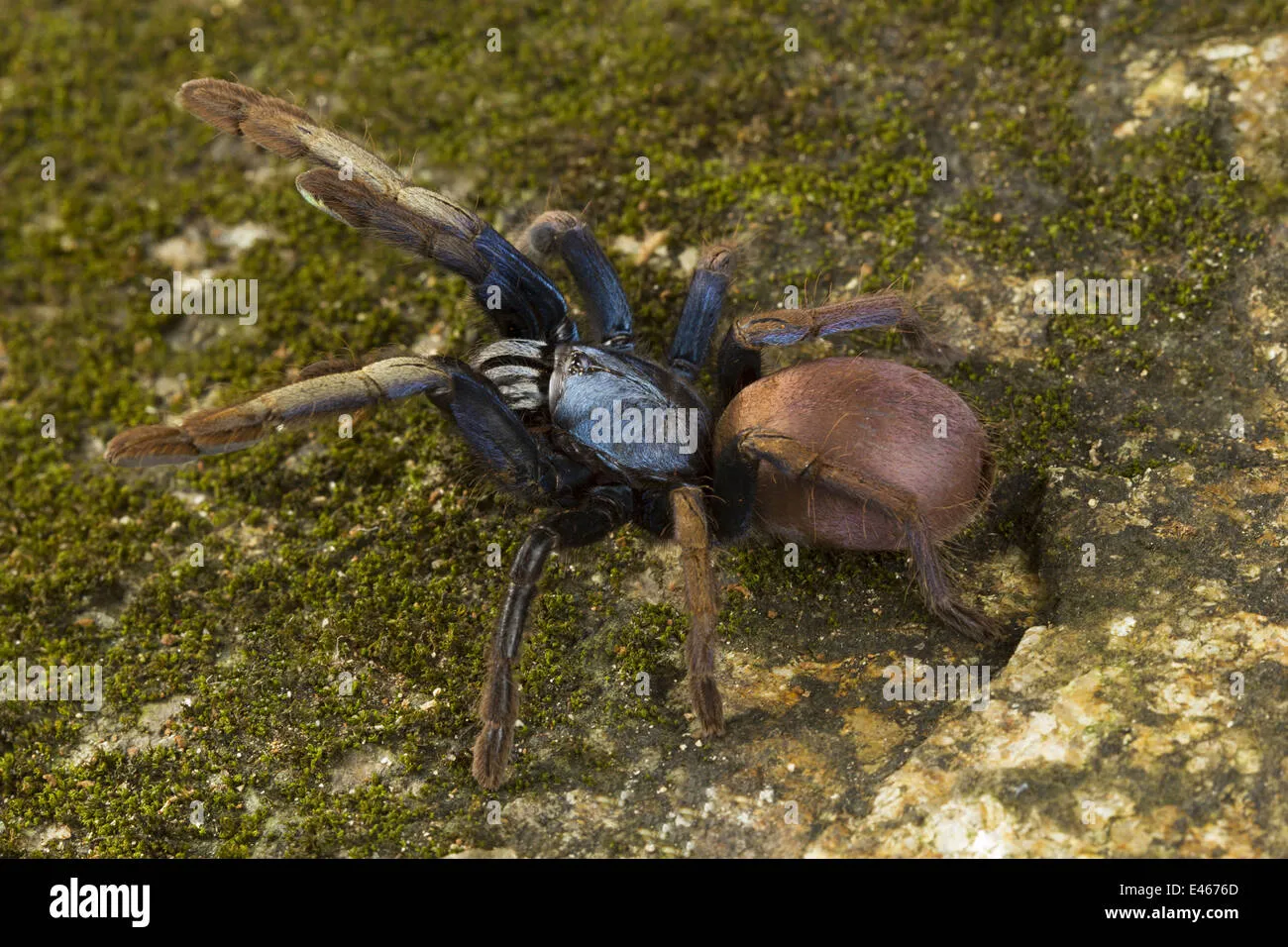
The Curly Hair tarantula is recognizable by its unique, curly hairs, giving them a distinctive appearance. Native to Central America, they are a popular species due to their calm temperament and relatively low care requirements. Their leg span usually reaches up to 6 inches. They are good burrowers and will readily excavate burrows in a suitable substrate. This species is an excellent choice for beginners, as they are hardy and easy to care for. Ensure a suitable substrate for them to burrow in.
Popularity in the Pet Trade
They are very popular due to their docile nature and ease of care. A deep substrate will encourage them to burrow. Humidity should be kept at 60-70%, and temperature at 75-85°F. Offer a variety of insects. They are a great choice for beginners.
7. Pamphobeteus antinous (Purple Bloom)
The Purple Bloom tarantula is a striking species from South America, known for its vibrant purple coloration. These tarantulas are quite attractive, which makes them desired pets. Their temperament can vary, but they are generally manageable. They are burrowers and appreciate a deep substrate and an environment that supports their burrowing behavior. These tarantulas can reach up to 7 inches, requiring spacious enclosures and appropriate care. They make a good pet if you are experienced.
Unique Features
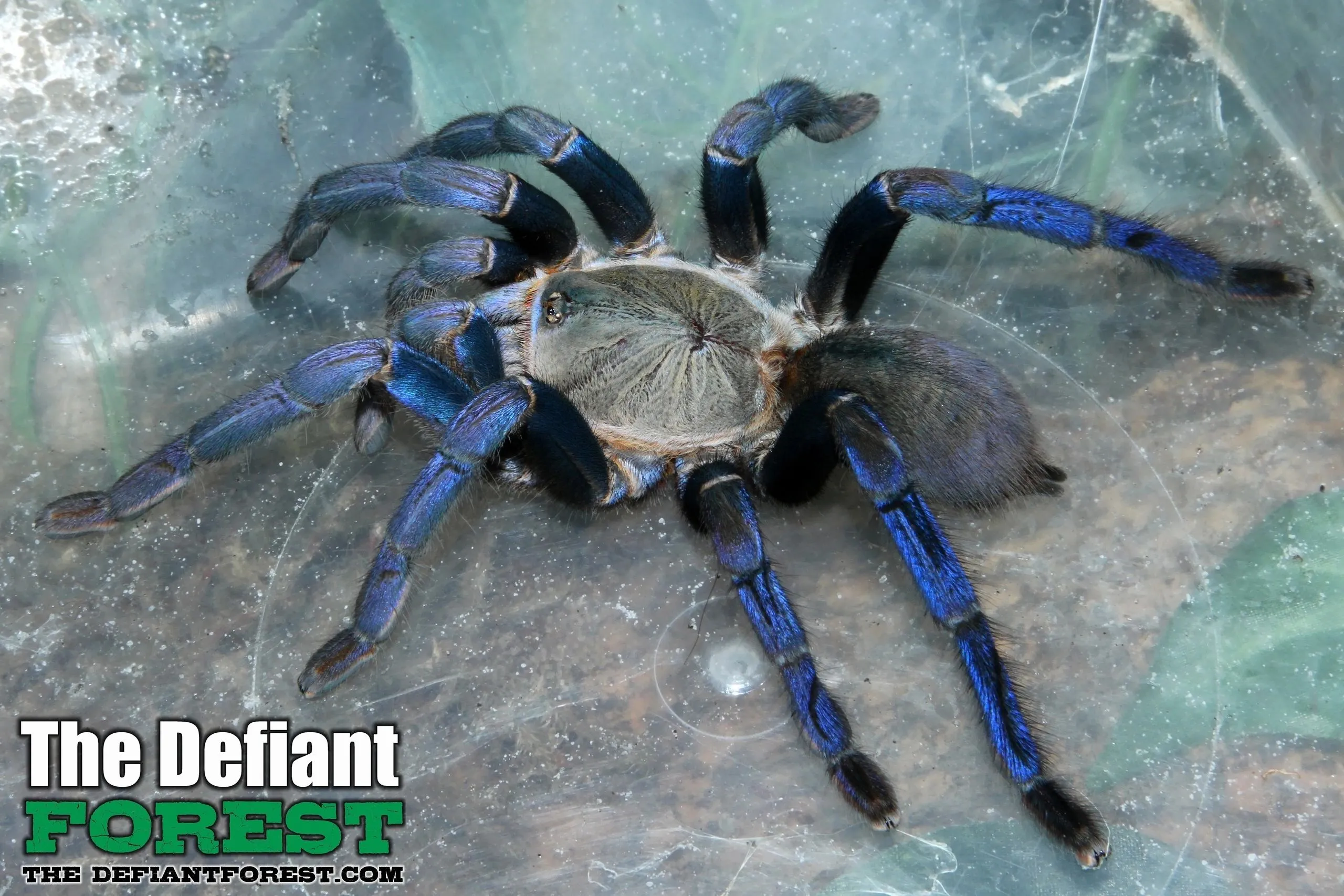
They are known for their purple coloration. Provide a large enclosure and deep substrate. Keep humidity at 65-75% and a temperature range of 75-85°F. Feed them a varied diet of insects. Handle with care.
Caring for Burrowing Tarantulas
Creating the Ideal Burrowing Environment
Creating the right environment for burrowing tarantulas is essential for their well-being. The enclosure should be sized appropriately for the species, with adequate space for burrowing. Substrate is critical, consisting of a mixture like peat moss, coco fiber, and vermiculite to provide support and allow burrowing. Furnish the enclosure with cork bark, rocks, and other decorations to provide secure spaces. Maintaining the correct temperature and humidity levels, along with proper ventilation, is vital to creating a healthy environment. Regular monitoring and adjustments are crucial to ensure the tarantula thrives.
Substrate and Humidity
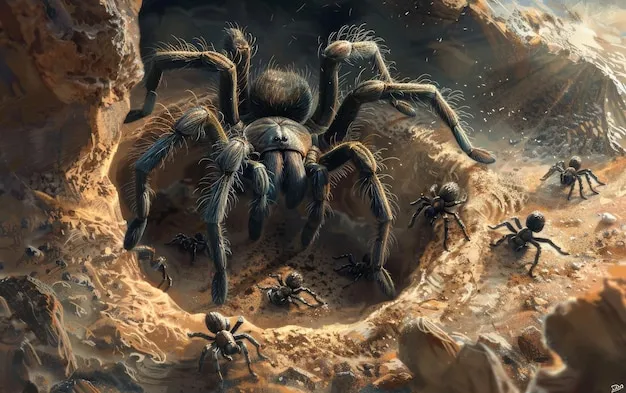
A deep layer of substrate is essential for burrowing. The mixture should allow the tarantula to dig and maintain its burrow structure. Maintain humidity levels appropriate for the species, usually 60-70%. Regular misting or a water dish helps to maintain this. The substrate must be kept slightly damp but not wet, as this can lead to health issues. Choosing the right substrate and managing humidity are key aspects.
Feeding and Hydration
Feeding burrowing tarantulas is typically done with a diet of insects, such as crickets, roaches, and mealworms. The frequency of feeding depends on the tarantula’s size and age, with younger tarantulas needing more frequent meals. Ensure the prey is appropriately sized to prevent injury. Always provide a shallow water dish with clean water to ensure hydration. Regular monitoring of the water dish is essential. Proper feeding and hydration are critical for a burrowing tarantula’s health.
Choosing the Right Enclosure
The enclosure should be the right size for the species, allowing enough room for burrowing. The material of the enclosure can be glass or acrylic, with secure lids to prevent escape. Ventilation is essential to avoid mold growth, but it needs to be balanced to maintain the humidity. Consider the tarantula’s burrowing habits when furnishing the enclosure. The enclosure should be easy to clean and maintain. Make sure the enclosure is well-suited to the tarantula’s needs to ensure their health and well-being.
